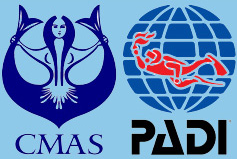Cetaceans around Mauritius Island
Different types of cetaceans can be found in Maurtius, some, such as humpback whales or killer whales are migrating through the Mauritius water, where as others such as sperm whales or dolphins are present all year round and Blue Water Diving Center can be organised observation trips.
Humpback whale
Each year from May to October, humpback whales migrate from Antartica to warm, tropical water for mating. They are then present around the 20th parallel, around Réunion and Mauritius Islands.
Mothers give birth and milk their calves
They comminucate between each other with fabulous acustic signals.
They usually leave at the end of September or beginning of October. If the calves born during the year are too weak, they delay their departure from 1-2 months.
In 2008 humpback whales stayed until the first week of December.
The calves spend their time playing and breaching. For the adults the jumps are possibly a way of communicating.
Two individuals can coordinate their breaches miles apart in a spectacular, precise and same choreography!
Humpback whales communicate with sounds that are like a song and can be heard kilometers away.
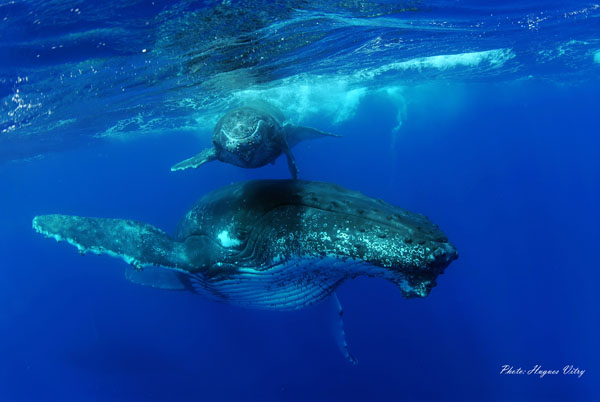
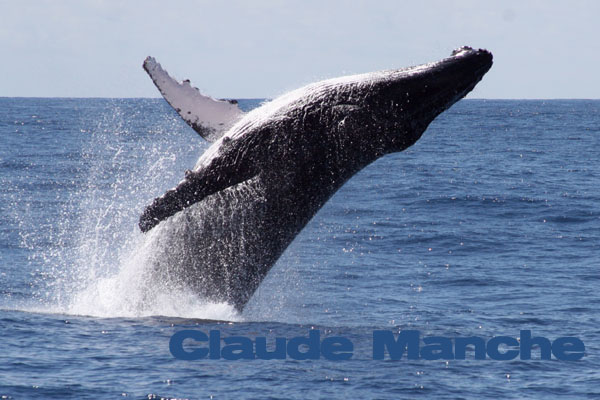
foto: Claude Manche
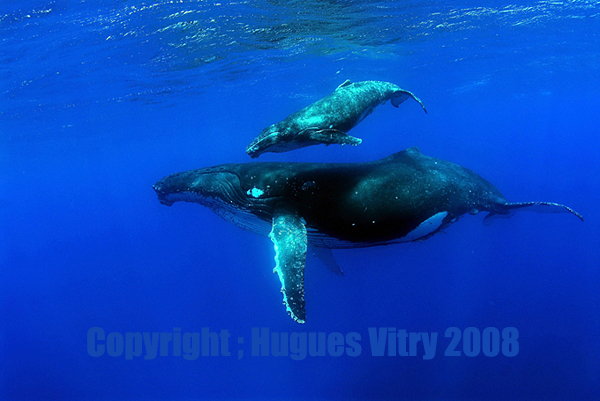
Great Sperm Whales (Physeter macrocephalus)
Sperm Whales are great mammals from the whales family. but the form part of the whales doted with teeth. (Odontocetes).
They have between 20 to 25 pairs of teeth in the lower jaw only. The tooth of a great male sperm whale measures up to 28cm long and is made of ivory.
The name Sperm whale comes from early whalers who thought that the whale keeps its sperm in its big head! Actually, when they cut open the head of a sperm whale a viscous white liquid poured out looking like seminal liquid, in fact the liquid was the spermacety liquid that helps in eco location, communication.
A group pf whale is called a "pod. A pod of Sperm-whale can count up to 20-30 individuals.
Males often swim alone except during mating times where they would constitute an harem of many females.
Males sperm-whale would migrate from the southern hemisphere as from the month of April till November.
Females and young male under 7 years of age would stay permanently in the Mauritian waters.
The gestation of a sperm whale is over a period of 15 months and the new born calf is 2 meter long. They would feed on their mothers milk for two years.

Spermwhalle logging- they stay all together cruising slowly or at rest on the surface.
They have an impressive bulky head and its blow is easily recognizable, as it is blown at the front and slightly on the left side of the head at approximately 45º forward.

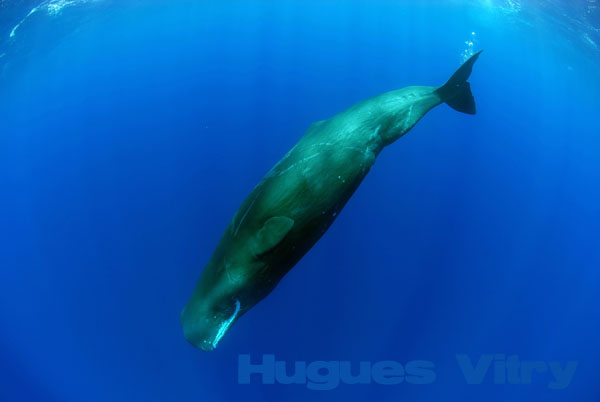
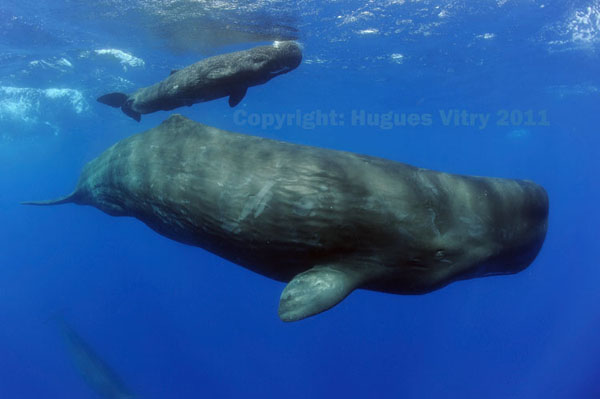
Mother sperm whale and calf
Female sperm whales by emitting distinctive metallic click click sounds that can be located from miles with proper equipment.
The male sperm whale emits stronger clicks that sounds like a hammer blow on an anvil.

When they want to escape or avoid something, they sound vertically to the deep.
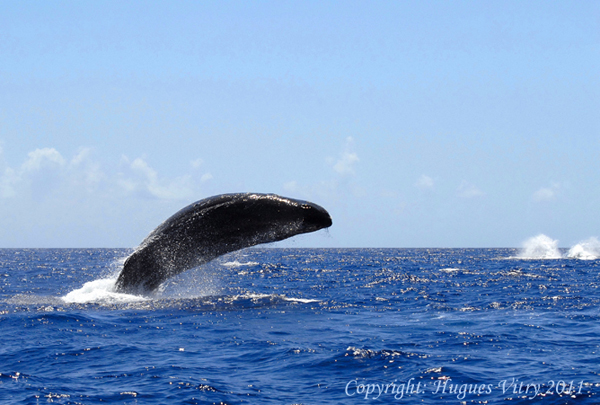
By the middle of the day they like playing. They would breach and flap their tail high out of the water.
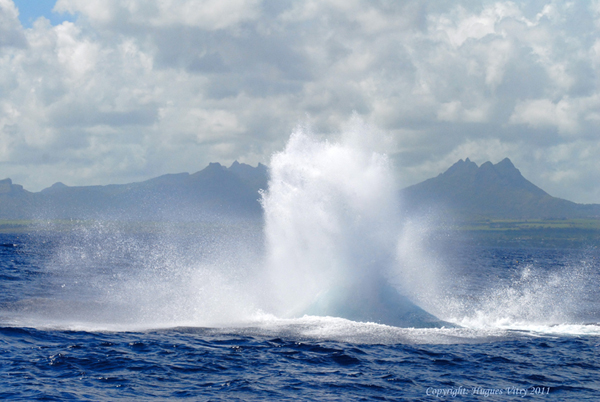
The entries after breaches look like big explosions.
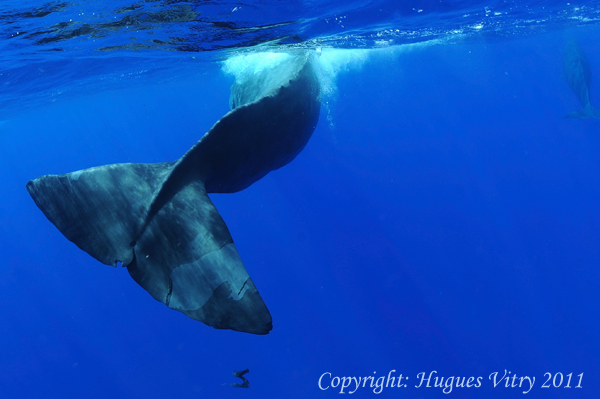
During these playing pieces of thin body tissues are detached from their bodies.
Tail flapping.
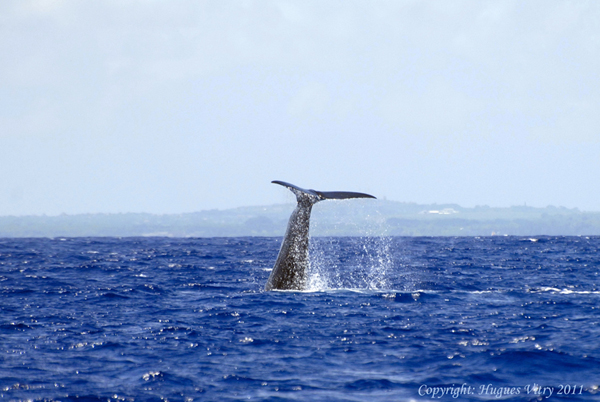
They feed mainly on Giant calamaris and fish.
A Giant calamari can measure more than 15 meters..
Some of these giant monster has been found floatting on the surface dead or half dead by fishermen.

Here a young giant calamari (9,38 mètres)

Normal Calamari (70 cm).
Few other species of whales can be observed in Mauritian waters, we cannot plan whale watching for these species because of their rarity.
Blue Water Diving Center offers Whale Watching for Humpback whales in August and September and Sperm-whales watching all year through.
Blainville's Beck Whale (Mesoplodon densirostris)


Melon Head Whale (Globicephala macrorhynchus)
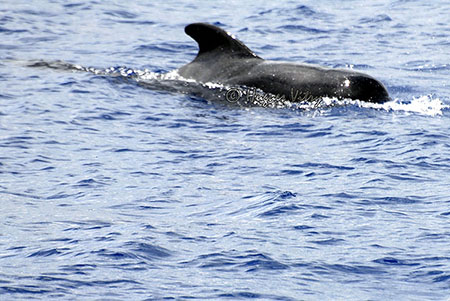

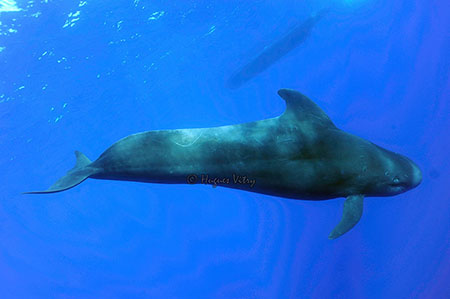
Dolphins
Most fishers in Mauritius would call dolphins "marsouins" actually "Marsouins" are french names for a species of dolphins not present in our waters. .
Most common dolphins near our coasts are the "Common Dolphin" and the spinner dolphins.
Other species like the oceanic spinner dolphins are also present far in the open sea few miles from the coast line. they do not approach the shallow waters.
Les dauphins long bec (Stenella longirostris)
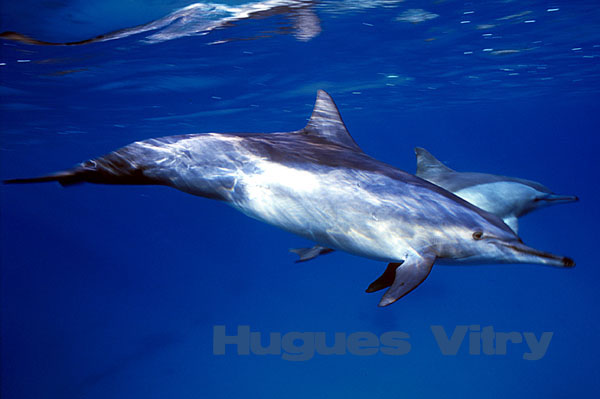
An important pod of Spinner dolphins has elected residence in the bay of Tamarind on the west coast of Mauritius. They sometimes move from Le Morne to Medline along the coast line.
Another smaller group would keep moving around the island.
These dolphins hunt at night and sleep during the day. Dolphins like some fish family sleep with only one hemisphere of their brain at the time then they switch to the other hemisphere. This allow them to stay alert and apparently awake.
During this phase they play and socialize.
It is not uncommon to see the dolphins leaping out high out of the water in spinning performance.
The Common Great Dolphin

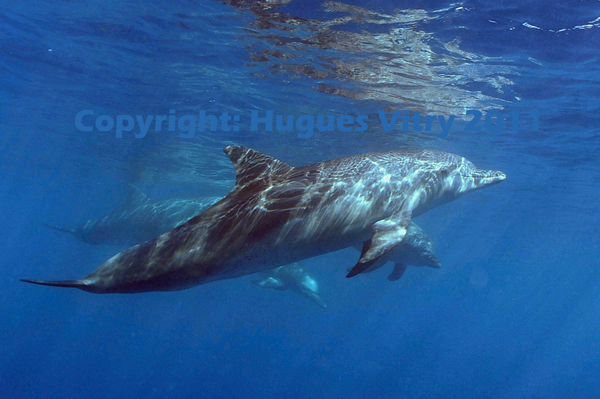
There are two species of common dolphins in Mauritius:
- The Common great dolphin (Tursiops adunctus)
- The common dolphin (Tursiops truncatus)
Killer Whales (Orcinus orca)

Killer Whales are not so common in Mauritius but from time to time fishermen report one or small group of 4 to 6 killer whales following shoals of Albacore(Yellow fin tunas) However they always stay very far out in the open sea. No observation has been recorded near the coast.





